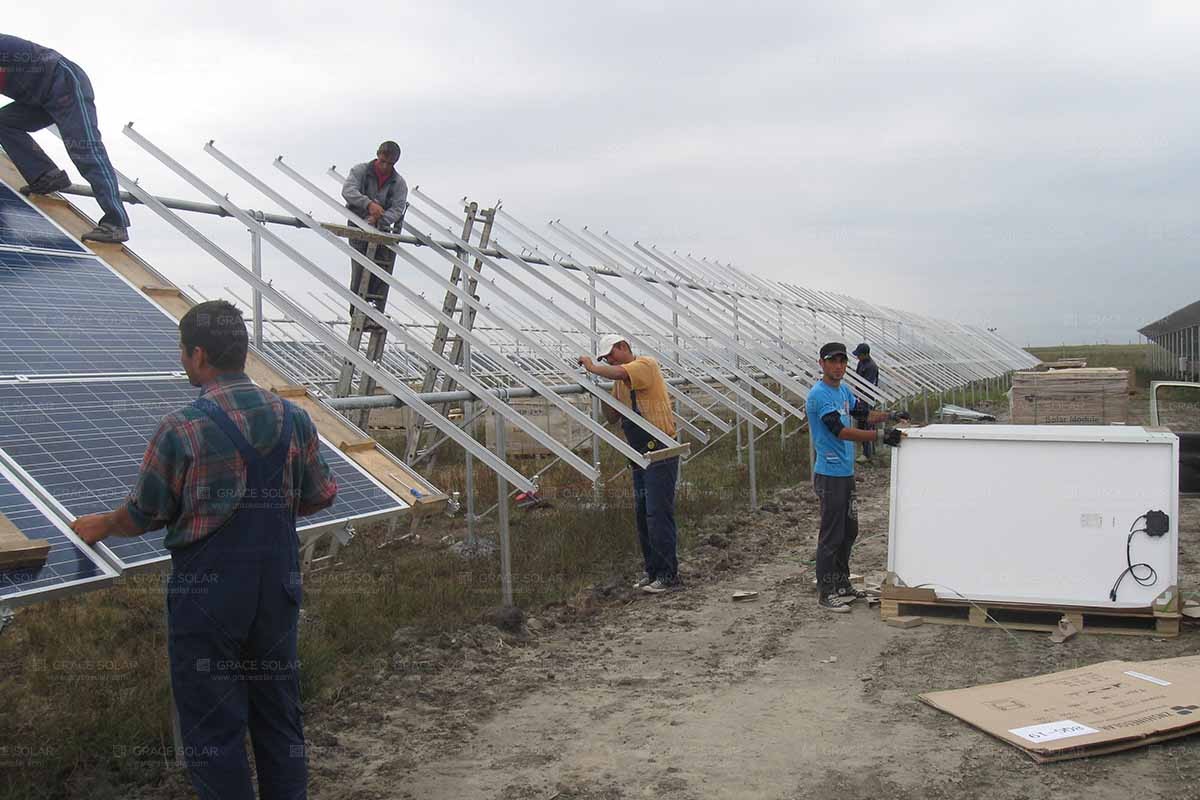How to achieve carbon neutrality in the construction industry
The construction industry is an important part of achieving carbon neutrality:
As a major carbon emitter, the construction industry has always had problems such as high resource consumption, high pollution emissions, and extensive construction methods. With the continuous improvement of China's urbanization level, carbon emissions in the construction production process are also rising. According to relevant data, the total energy consumption in the whole process of China's construction in 2018 was 2.147 billion tons of standard coal equivalent (tce), accounting for 46.5% of the total energy consumption in the country; in 2018, the total carbon emission of the whole process of China's construction was 4.93 billion tce, accounting for 51.3% of national carbon emissions. It can be seen that energy conservation and emission reduction in the construction industry is a very important part of helping to achieve carbon neutrality. It is necessary to promote the green and low-carbon development of the entire construction industry chain from the full life cycle of construction material production, construction, operation and maintenance.
How to achieve carbon neutrality in the construction industry?
The construction industry should further promote the energy-saving renovation of existing buildings, improve building energy-saving standards, promote ultra-low-energy buildings, near-zero-energy buildings, and zero-carbon buildings, and finally realize that all new buildings in the future will meet the green building standards.
To achieve carbon neutrality in the construction industry, it should also vigorously develop BIPV photovoltaic building integration:
BIPV photovoltaic building integration is to install solar photovoltaic power generation array on the outer surface of the building envelope to provide electricity. Grace Solar has carried out a large number of industry-university research and application in the field of BIPV photovoltaic building integration, and has achieved remarkable results. It is currently China's largest single BIPV project solution provider; it has high wind speed, high snow load, good ventilation and lighting, heat insulation and fire protection Excellent, shockproof and waterproof, easy operation and maintenance in the later stage, etc.; suitable for industrial and commercial roofs, old plant renovation and new plant construction power station projects.
.png)
1. Good adaptability, suitable for all conventional framed solar modules;
2. Wide range of application, suitable for most ordinary old and newly built steel structure workshops;
3. High appearance, meeting the requirements of architectural aesthetics;
4. Satisfy the three characteristics of wind pressure resistance, air tightness and water tightness of the building;
5. Meet the requirements of anti-leakage, anti-settling and anti-stretching of conventional buildings.
As a major carbon emitter, the construction industry has always had problems such as high resource consumption, high pollution emissions, and extensive construction methods. With the continuous improvement of China's urbanization level, carbon emissions in the construction production process are also rising. According to relevant data, the total energy consumption in the whole process of China's construction in 2018 was 2.147 billion tons of standard coal equivalent (tce), accounting for 46.5% of the total energy consumption in the country; in 2018, the total carbon emission of the whole process of China's construction was 4.93 billion tce, accounting for 51.3% of national carbon emissions. It can be seen that energy conservation and emission reduction in the construction industry is a very important part of helping to achieve carbon neutrality. It is necessary to promote the green and low-carbon development of the entire construction industry chain from the full life cycle of construction material production, construction, operation and maintenance.
How to achieve carbon neutrality in the construction industry?
The construction industry should further promote the energy-saving renovation of existing buildings, improve building energy-saving standards, promote ultra-low-energy buildings, near-zero-energy buildings, and zero-carbon buildings, and finally realize that all new buildings in the future will meet the green building standards.
To achieve carbon neutrality in the construction industry, it should also vigorously develop BIPV photovoltaic building integration:
BIPV photovoltaic building integration is to install solar photovoltaic power generation array on the outer surface of the building envelope to provide electricity. Grace Solar has carried out a large number of industry-university research and application in the field of BIPV photovoltaic building integration, and has achieved remarkable results. It is currently China's largest single BIPV project solution provider; it has high wind speed, high snow load, good ventilation and lighting, heat insulation and fire protection Excellent, shockproof and waterproof, easy operation and maintenance in the later stage, etc.; suitable for industrial and commercial roofs, old plant renovation and new plant construction power station projects.
.png)
Grace Solar BIPV photovoltaic building integration advantages:
.jpg)
1. Good adaptability, suitable for all conventional framed solar modules;
2. Wide range of application, suitable for most ordinary old and newly built steel structure workshops;
3. High appearance, meeting the requirements of architectural aesthetics;
4. Satisfy the three characteristics of wind pressure resistance, air tightness and water tightness of the building;
5. Meet the requirements of anti-leakage, anti-settling and anti-stretching of conventional buildings.



.jpg)